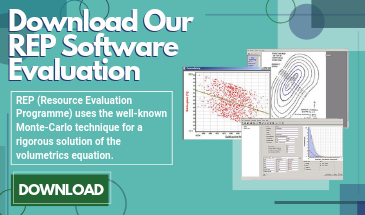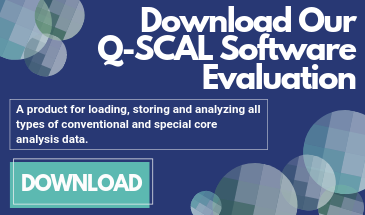Blog
The Best “Middle” Value For Hydrocarbon Exploration



Of course, the correct approach when discussing this prospect with your colleagues is to discuss all the numbers in the table above, but very often people prefer to have one number to describe the prospect’s size, and to use when working out whether it passes the economic hurdles your company has set. Regrettable, but true; and the question is, which number should you use?
Like most volumes in hydrocarbon exploration you can see that the distribution is approximately log-normal, and there are three well-known measures of central value:
Mean: 17.8 bcf
P50 or median: 14.2 bcf
Mode: 8.2 bcf
The mode is the “most likely” value and is shown by the peak on the relative distribution (the yellow curve in the above graph) – but this is not a very good middle value, because it completely ignores the long tail. It’s also the lowest number, so – of course – nobody likes it.
On the other hand, the long tail plays an important part in the mean because there is a finite, if small, chance of the outcome being huge. People like it because it’s the highest of the central values. But, in this example, there’s only a 38% chance that you will discover this value (17.8 bcf). That’s closer to 1 in 3 than 1 in 2. No wonder the reservoir engineers complain that explorers are over-optimistic – they can prove it! If you rely on the mean in oil well drilling, then – more often than not – the discovery will be smaller.
The P50 is that value which is as likely to be exceeded as not. It is influenced by the long tail, but not as influenced as the mean. This value keeps the engineers quiet, because – if you are doing a good job – half the time you will be above that number, and half the time below it. But the long tail is there for a reason – there’s always a possibility of “the big one”, and the industry has plenty of examples.
So: P50 or mean? That likely depends partly on how many wells you are going to drill. If you are going to make, for example, 10 discoveries a year, then you are likely to fully sample the distributions – you are going to hit one or two bigger ones, and the tail comes into play.
But if you are only drilling a few wells, relying on a big one is a more problematic. Drilling wells is expensive, and you probably have only a limited exploration budget (or your investors have only limited patience). Using the P50 is a very pragmatic approach and is a reasonable recommendation.
In the end, the choice between the P50 and the mean is a management decision, and those fellows like the biggest numbers available. But they can be educated – sometimes.
Logicom E&P offers three key pieces of software to aid in the exploration of oil and gas reservoirs. Click here to make an enquiry or call us on +44 1296 655511. 



